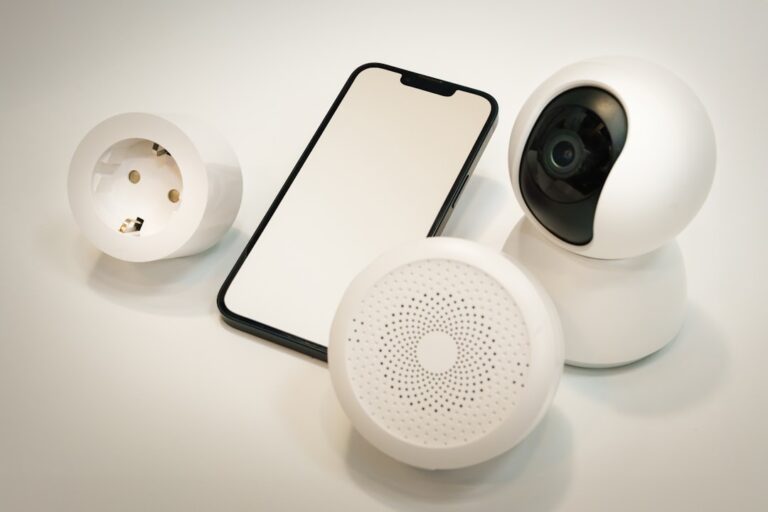Voice technology has experienced a meteoric rise in recent years, transforming the way individuals interact with devices and access information. This evolution can be traced back to the early days of speech recognition systems, which were often clunky and limited in their capabilities. However, advancements in artificial intelligence, natural language processing, and machine learning have propelled voice technology into the mainstream.
Today, voice assistants like Amazon’s Alexa, Apple’s Siri, Google Assistant, and Microsoft’s Cortana are ubiquitous, embedded in smartphones, smart speakers, and even home appliances. The convenience of hands-free operation and the ability to perform tasks through simple voice commands have made these technologies increasingly appealing to consumers. The proliferation of smart devices has further fueled the adoption of voice technology.
As homes become smarter with the integration of Internet of Things (IoT) devices, voice interfaces provide a seamless way to control everything from lighting to thermostats. The COVID-19 pandemic accelerated this trend as people sought contactless solutions to minimize physical interactions. Voice technology emerged as a practical alternative, allowing users to manage their environments without touching surfaces.
This shift not only highlights the growing reliance on voice interfaces but also underscores their potential to reshape daily routines and interactions with technology.
Advantages of Voice Tech Over Traditional Keyboards
One of the most significant advantages of voice technology is its ability to enhance efficiency and speed in communication. Typing on a keyboard can be cumbersome and time-consuming, especially for lengthy messages or documents. In contrast, speaking allows for a more natural flow of thoughts, enabling users to articulate ideas quickly and effortlessly.
Studies have shown that individuals can speak at a rate of approximately 150 words per minute, while typing typically averages around 40 words per minute. This disparity illustrates how voice technology can significantly reduce the time required to complete tasks such as composing emails or drafting reports. Moreover, voice technology offers a level of convenience that traditional keyboards cannot match.
Users can multitask more effectively by utilizing voice commands while engaged in other activities. For instance, someone cooking in the kitchen can ask their voice assistant for a recipe or set a timer without needing to stop what they are doing. This hands-free capability not only enhances productivity but also allows for a more fluid interaction with technology.
Additionally, voice tech can cater to individuals who may struggle with traditional input methods due to physical limitations or disabilities, making it an invaluable tool for enhancing overall user experience.
Accessibility and Inclusivity in Voice Tech

Voice technology plays a crucial role in promoting accessibility and inclusivity for individuals with disabilities. For those with mobility impairments or conditions such as arthritis, using a keyboard or touchscreen can be challenging or even impossible. Voice interfaces provide an alternative means of interaction that empowers these individuals to engage with technology on their terms.
By simply speaking commands, users can navigate applications, control devices, and access information without the need for physical input methods. Furthermore, voice technology has the potential to bridge language barriers and enhance communication for non-native speakers. Many voice assistants are equipped with multilingual capabilities, allowing users to interact in their preferred language.
This feature not only fosters inclusivity but also encourages cultural exchange and understanding. For example, a Spanish-speaking user can ask their voice assistant for directions or information in Spanish, making technology more accessible to diverse populations. As developers continue to refine voice recognition algorithms and expand language support, the potential for inclusivity within voice tech will only grow.
Challenges and Limitations of Voice Tech
| Challenges and Limitations of Voice Tech |
|---|
| Lack of accuracy in understanding accents and dialects |
| Difficulty in understanding natural language processing |
| Privacy concerns related to voice data collection |
| Limitations in handling complex commands and queries |
| Challenges in noisy environments and background interference |
Despite its many advantages, voice technology is not without its challenges and limitations. One significant hurdle is the accuracy of speech recognition systems, which can vary based on factors such as accents, dialects, and background noise. While advancements have been made in improving recognition accuracy, users may still encounter frustrations when their commands are misinterpreted or not recognized at all.
This issue can be particularly problematic in environments with high levels of ambient noise or for individuals with speech impairments. Another challenge lies in the context-awareness of voice assistants. While they excel at executing straightforward commands, they often struggle with more complex queries that require nuanced understanding or contextual knowledge.
For instance, asking a voice assistant for restaurant recommendations may yield generic results without considering personal preferences or dietary restrictions. As users increasingly rely on voice technology for everyday tasks, the need for more sophisticated contextual understanding becomes paramount. Developers must continue to innovate and enhance the capabilities of voice assistants to address these limitations effectively.
The Future of Voice Technology
The future of voice technology is poised for remarkable growth and innovation as advancements in artificial intelligence continue to evolve. One promising direction is the integration of voice interfaces with augmented reality (AR) and virtual reality (VR) environments. Imagine navigating a virtual space using only your voice or interacting with digital objects through spoken commands.
This convergence could revolutionize industries such as gaming, education, and training by creating immersive experiences that feel intuitive and natural. Additionally, as machine learning algorithms become more sophisticated, voice assistants will likely develop enhanced personalization capabilities. By analyzing user behavior and preferences over time, these systems could provide tailored responses and recommendations that align with individual needs.
For example, a voice assistant could learn a user’s preferred news sources or music genres and curate content accordingly. This level of personalization would not only improve user satisfaction but also foster deeper engagement with voice technology.
Voice Tech in Business and Industry

Voice technology is making significant inroads into various business sectors, transforming operations and enhancing customer experiences. In customer service, companies are increasingly adopting voice assistants to handle inquiries and provide support. Chatbots equipped with voice recognition capabilities can engage customers in natural conversations, addressing their needs efficiently while reducing wait times.
This shift not only streamlines operations but also allows human agents to focus on more complex issues that require personal attention. In industries such as healthcare, voice technology is proving invaluable for improving patient care and operational efficiency. Medical professionals can use voice recognition software to dictate notes directly into electronic health records (EHRs), saving time on documentation while ensuring accuracy.
Additionally, patients can interact with virtual health assistants to schedule appointments or access medical information without needing to navigate complex phone menus or websites. As businesses continue to recognize the potential of voice technology to enhance productivity and customer satisfaction, its adoption across various sectors is expected to accelerate.
Privacy and Security Concerns with Voice Tech
As voice technology becomes more integrated into daily life, concerns surrounding privacy and security have emerged as critical issues. Voice assistants are always listening for activation phrases, raising questions about data collection and surveillance. Users may be unaware that their conversations could be recorded or analyzed by companies for improving services or targeted advertising purposes.
This lack of transparency can lead to feelings of unease among consumers who value their privacy. Moreover, security vulnerabilities pose additional risks associated with voice technology. Hackers may exploit weaknesses in voice recognition systems or use techniques such as “voice spoofing” to gain unauthorized access to accounts or devices.
For instance, if a malicious actor mimics a user’s voice convincingly enough, they could potentially bypass security measures that rely on voice authentication. As the use of voice technology expands, it is imperative for developers and companies to prioritize robust security protocols and transparent data practices to safeguard user information.
Tips for Using Voice Tech Effectively
To maximize the benefits of voice technology while minimizing potential frustrations, users can adopt several best practices when interacting with their devices. First and foremost, clarity is key; speaking clearly and at a moderate pace can significantly improve recognition accuracy. Users should also familiarize themselves with the specific commands and functionalities available for their chosen voice assistant, as each platform may have unique features that enhance usability.
Additionally, creating an optimal environment for voice interaction can make a substantial difference in performance. Reducing background noise and ensuring that the device is within close proximity can help improve recognition rates. Users should also consider customizing their settings to suit their preferences; many voice assistants allow for adjustments in language, accent recognition, and even personalized wake words.
By taking these steps, individuals can enhance their experience with voice technology and unlock its full potential in everyday life.
FAQs
What is voice technology?
Voice technology refers to the use of speech recognition and natural language processing to enable users to interact with devices and systems using their voice. This technology allows users to perform tasks, access information, and control devices through spoken commands.
How is voice technology becoming the new keyboard?
Voice technology is becoming the new keyboard as it offers a hands-free and efficient way for users to input information and interact with devices. With advancements in speech recognition and AI, voice technology is increasingly being integrated into various devices and applications, reducing the reliance on traditional keyboards for input.
What are the benefits of using voice technology over keyboards?
Using voice technology over keyboards offers several benefits, including hands-free operation, increased accessibility for individuals with disabilities, faster input speed, and the ability to multitask while using voice commands. Voice technology also allows for more natural and conversational interactions with devices and systems.
What are some common applications of voice technology?
Voice technology is commonly used in virtual assistants like Amazon Alexa, Google Assistant, and Apple’s Siri, as well as in smart home devices, automotive systems, customer service chatbots, and healthcare applications. It is also being integrated into business and productivity tools to enable voice-based input and control.
What are the challenges of adopting voice technology as the new keyboard?
Challenges of adopting voice technology as the new keyboard include privacy concerns related to always-on listening, accuracy and reliability of speech recognition, language and accent barriers, and the need for users to adapt to new interaction patterns. Additionally, there may be limitations in certain environments where voice input is not practical or feasible.











